Y.M.C.A. Building, Raleigh, N.C.
This week Flashback Friday takes “a corner room at the Y.” Raleigh’s first permanent YMCA facility, seen here on our featured postcard, is long gone, but the ‘Y’ itself today still maintains an important presence in the capital city.
The message written on the back of this week’s card is barely legible and is rather cryptic, even.
Arr[ived] in N.Y. at 6.45 yest[erday] a.m. I had a busy day. Marge came over & met me at 10, & we shopped, had lunch at Alice Foote MacDougall’s [illegible], & saw Beatrice Millie in “She’s My Baby.” — then got a taxi & my trunk & came over. Didn’t get here till 7. Got washed & went back down to Crescent & met Guy & had dinner. Home at 9.30, tried to phone Trude & she was in bed [illegible] & went to bed. Your card was here. Â W.
I am curious as to how a postcard depicting a Raleigh landmark ended up being mailed to a Massachusetts address from Brooklyn, NY. Maybe ‘W’ simply picked it up at the Raleigh train depot on her way north and didn’t get a chance to mail it until she got home to Brooklyn. And I’m further curious that the message itself presents such a detailed chronology of just a few hours in a day in the life of ‘W.” Go figure.
The YMCA — Then and Now
The first Young Men’s Christian Association (YMCA) was founded in London in 1844 as “a refuge of Bible study and prayer for young men seeking escape from the hazards of life on the streets.” Here in America, the first Y opened its doors  in Boston in 1851. Beginning in the late 19th century, YMCA programs were expanded to include swimming, sports teams and social activities for young men with the goal “to put Christian principles into practice by developing a healthy ‘body, mind and spirit'”.
Prior to the 1960s, YMCA facilities in the United States were built with hotel-like rooms called residences, or dormitories, thus providing inexpensive  housing for young single men arriving into an unfamiliar urban environment, especially for those from rural areas.
As American society evolved over the course of the late 20th century, the YMCAÂ in 2010Â de-emphasized its focus on housing young men and extended its outreach to the greater community, and adopted a revitalized mission —
to strengthen the foundations of community through youth development, healthy living, and social responsibility.
A detailed history of the YMCA and its mission can be found on the YMCA website.
Raleigh’s ‘Y’
Originally established in Raleigh in 1858, the YMCA reorganized after the Civil War in 1867. Initially, the organization focused on “the spiritual nurturing of young men through Sunday schools, devotional meetings and Christian tracts and books.” Later, the Y took on charitable projects, such as supplying Raleigh’s poor with coal during the winter.
Throughout the late 19th century Raleigh’s YMCA rented space for its activities, as it had no permanent facility. As a result of mismanagement, however, the Y closed 1898. After several failed attempts to reorganize, a vigorous campaign led by Josephus Daniels and the N&O in 1911 resulted in raising $70,000.
Thus revitalized, Raleigh’s YMCA erected its first permanent building in 1913. Amenities included a gymnasium, assembly hall, reading rooms, a swimming pool in the basement and a 42-room ‘hostelry.’ The handsome five-story structure was built on the corner of Edenton and Wilmington Streets, a prominent site opposite the state capitol.
This view of the Y was taken in 1950. The building was demolished in the early 1970s; the North Carolina Museum of History occupies the site today.
The Raleigh YMCA sold its aging 1913 building to the state in 1959 and erected a new facility on Hillsborough St in 1960. A modernist dormitory-styled building was designed by Raleigh architect Leif Valand. It featured a facade of white glazed tile, ribbon fenestration and a vertical brick stair tower accentuating the main entrance. Enormous initial letters, fashioned of brushed aluminum, announced that THIS building was the YMCA.
This photo of the new YMCA at 1601 Hillsborough St was taken shortly before its completion in 1960.Â
With its de-emphasis as a residential facility and refocus of its mission on community-based programs in the late 20th century, the YMCA demolished its Hillsborough St building in 2006. The new structure erected on the same site opened in 2009. Although I miss the modernist Y, I am heartened that at least the classic 1960 aluminum initial letters spelling out Y M C A were salvaged and reinstalled on the facade of the new building.
This is a recent view of the 2009 YMCA on Hillsborough St. The new building proudly displays the 1960 aluminum letters.
Our Flashback Friday ‘white border’ postcard this week was published by long time Raleigh stationer and office outfitter James E. Thiem. It was printed by the Curt Teich Co. of Chicago under the trade name ‘C.T. American Art Colored.’
Curt Teich Co.  1893-1974 Chicago, IL
A major publisher and printer. Their U.S. factories turned out more cards in quantity than any other printer. They published a wide range of national view-cards of America and Canada. Many consider them one of the finest producers of White Border Cards. The Linen Type postcard came about through their innovations as they pioneered the use of offset lithography. They were purchased by Regensteiner Publishers in 1974 which continued to print cards at the Chicago plant until 1978.
“Flashback Friday†is a weekly feature of Goodnight, Raleigh! in which we showcase vintage postcards depicting our historic capital city. We hope you enjoy this week end treat!


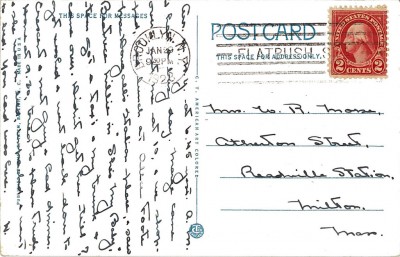
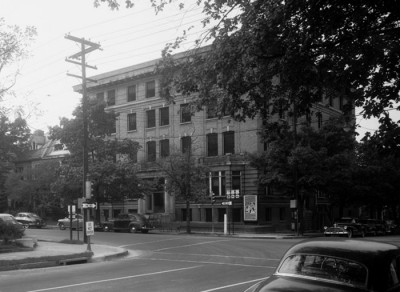
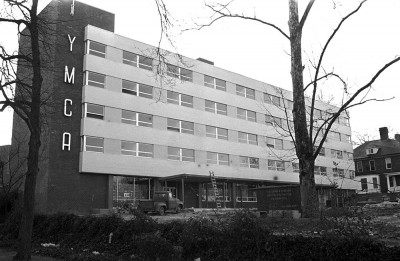
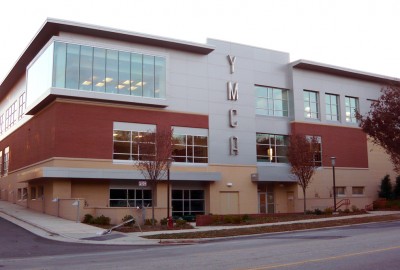
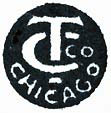
 Sign up for the Newsletter
Sign up for the Newsletter
02/14/2014
Great history of the YMCA and the buildings. The postcard message with all the details and abbreviations was just the 1920’s equivalent of a text message. “W.” may have sent one or more such postcards every day.
02/14/2014
It’s interesting that all three YMCA buildings were notable when constructed. Thanks for this post, Raleigh Boy.
W’s handwriting is remarkably hard to read. Alice Foote MacDougall was a NY restaurateur of that era and her first location was in Grand Central Station. So I wonder if the illegible part after her name was “station-place.”
The initial letter of the actress’s last name is most likely an ‘L’ not an ‘M’. Comic actress Beatrice Lillie starred in “She’s My Baby” from January to March, 1928.
The final illegible word may be “unpacked,” something Barney Fife probably also did after his Raleigh getaway….
http://restaurant-ingthroughhistory.com/2008/08/11/restaurateurs-alice-foote-macdougall/
http://ibdb.com/production.php?id=10546
http://www.newsobserver.com/2010/03/01/430107/fact-finder-ymca-facilities.html
02/15/2014
I recall the old YMCA very well, although I was never inside the building. Every time we drove past it, my dad (a Raleigh native, now 91) would tell of being a Y member as a kid and how boys would swim au naturel there…this being long before women/girls were allowed as members.
02/15/2014
I lived in this old YMCA building for several years. My room was on the third floor on the corner. There were about 20 of us fellows that lived there. I have fond memories of the place. I worked just two blocks from the Y on Wilmington Street.1950’s was a great time in Raleigh.
02/17/2014
I never went to the one on Wilmington St. However, the first one at the current location, I spent a lot of time at that one. In the late 60’s they had a program for school age children. You worked you way up in rank, in athletics, swimming, civics, sportsmanship, religion, etc. Many of my school friends went there with me. Many of the counselors were NC State students. I was impressed with them and the way they enjoyed engaging the young boys and girls in the program. No wonder I ended up getting my undergraduate degrees there.
02/17/2014
There was another beautiful YMCA building in Raleigh, on the NCSU Campus. Unfortunately, it was torn down to make room for the monstrosity that is Kamphoefner Hall: http://news.lib.ncsu.edu/scrc/2011/07/22/the-ymca-building-and-danforth-chapel/
02/20/2014
Curt — Thanks for deciphering “W’s” handwriting. I’m usually pretty good at it, but parts of this message just had me stumped!
Also thanks for info on Alice Foote MacDougall’s restaurant and the actress Beatrice Lillie — Goodnight Raleigh readers are smart detectives!
03/27/2014
I owe a lot to my many years growing up at the Y in the 40s & 50s. That physical development probably is responsible in large part to my good health many many years later. I remember Watson, Ward, & Don. Good men they were. I only lived 2 blocks away. Since we didn’t have much money most of my membership was sponsored. During the summer I spent Tues., Thurs., & Sat. there. The only draw back was that dadgum cold water in the pool where we swam naked. The grade school basketball league on Sat. mornings was a big deal and Murphey was the Champion.
11/01/2021
In late spring 1949 or 1950, there was an ad in the one of the Raleigh newspapers that the YMCA was was offering a five day session of swimming lessons for girls at their pool. I wanted to learn to swim so I was allowed to enroll. With my bathing suit on under my clothes, I walked three blocks south on North Wilmington Street to the side entrance of the “Y” which opened pretty directly on the pool. I vividly remember lessons of how to put our faces in and out of the water and open our eyes under water the first day and learning to do the “dead man’s float” on the second day. The next three days were arms, legs, and putting it all together. I enrolled the next year, and it was the exact same program. And that’s how I learned to keep my head above water and not panic when I had to float and tread water. Walked home with a towel dried bathing suit underneath and never really learned to swim – but I loved the pool at Pullen Park and being at Atlantic Beach in the ocean where I could float all day. And was really amazed when I learned later that men and boys at the Y had to swim nude.
12/08/2021
Annette! Remember Mrs. Bessie Polier, my grandmother, who lived near you on E. North Street? My sisters and I roller skated around the block – brick sidewalks much of the way – in the ’50’s and ’60’s. Loved the Heck Andrews house and little old Miss Perry.
I’m Bess Polier’s granddaughter…living in Richmond Va…..
I’ve often thought of you, Dixie Kay, Hugh, and Randy. My grandmother loved your Mom and you kids!
I get to Raleigh every now and then….are you living there?
My email: marshaphoto@gmail.com
It would be fun to connect!
Best wishes,
Marsha Polier (Grossman)